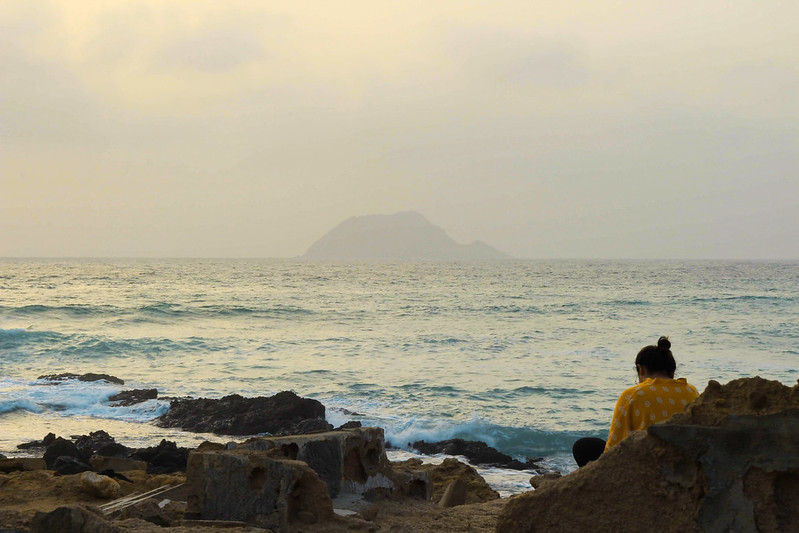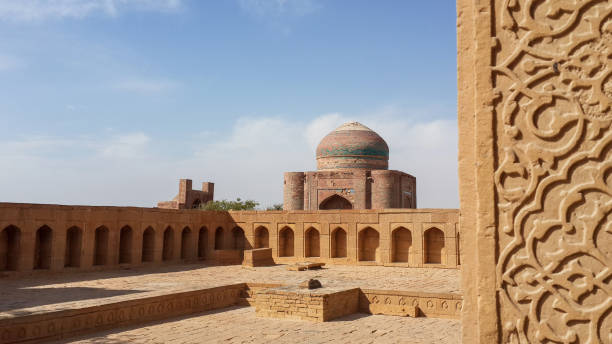
The Makli Necropolis sits in the historic city of Thatta, Sindh, Pakistan. It is one of the largest cemeteries in the world, covering over 10 square kilometers. People believe it holds between 500,000 to 1 million tombs. Built in the 14th century, it became the final resting place for kings, queens, saints, scholars, and noblemen for more than 400 years. Because of its historical and architectural importance, UNESCO added it to the World Heritage List in 1981. Today, many history lovers, spiritual seekers, and travelers visit this remarkable place.
The Makli Necropolis is more than just a graveyard. It represents Sindh’s diverse history, blending Islamic, Persian, Hindu, and Mughal influences. Visitors can admire its detailed stone carvings, geometric designs, and Arabic calligraphy. The site’s spiritual energy and local legends make it even more fascinating. Whether you enjoy history, architecture, or spirituality, this place offers an unforgettable experience.
Historical Background
The Origins of Makli Necropolis
The Makli Necropolis dates back to the 14th century, during the rule of the Samma dynasty (1351–1524). The Samma rulers made Thatta their capital and supported art, culture, and architecture. They turned the city into a center for trade, learning, and spirituality. As a result, they chose Makli as their burial site.
Many believe that the Sufi saint Sheikh Hamad Jamali blessed this land and predicted its future as a sacred necropolis. What started as a small burial ground grew into a massive cemetery, showcasing the grandeur and cultural diversity of Sindh’s ruling dynasties.
The Samma Dynasty: Founders of Makli
The Samma dynasty was the first to shape Makli Necropolis. These rulers followed Sindhi traditions and Islamic beliefs, blending both in their architecture. Their tombs at Makli stand out for their:
- Stone Carvings – Intricate floral and geometric patterns inspired by nature.
- Islamic Elements – Domes, minarets, and Arabic calligraphy.
- Local Craftsmanship – Use of locally sourced stone and traditional techniques.
The Tomb of Jam Nizamuddin II is one of the most remarkable from this period. As the most famous Samma ruler, his tomb showcases Sindhi-Islamic architecture with a massive dome, intricate carvings, and inscriptions honoring his reign.
The Samma dynasty’s legacy at Makli laid the foundation for its growth. They helped establish it as a cultural and spiritual landmark for future generations.
The Arghun and Tarkhan Dynasties: Persian Influences
After the Samma dynasty declined, Sindh came under the rule of the Arghun dynasty (1520–1554) and later the Tarkhan dynasty (1554–1592). Both dynasties had Turkic-Mongol roots and introduced Persian influences to the region.
Arghun Contributions
The Arghuns were skilled in military strategy and administration. Their tombs at Makli showcase a blend of Persian and Central Asian architecture, featuring:
- Pointed Arches – A signature element of Persian architecture.
- Glazed Tiles – Used for decoration, adding color and elegance.
- Symmetrical Designs – Reflecting the Persian love for balance and harmony.
Tarkhan Contributions
The Tarkhans continued and expanded the Arghun architectural legacy. Their tombs stand out for:
- Ornate Facades – Featuring detailed carvings and inscriptions.
- Octagonal and Square Structures – A shift from the circular domes of the Samma period.
- Persian Calligraphy – Beautiful Quranic verses and poetic inscriptions.
The Tomb of Isa Khan Tarkhan II is one of the most famous from this era. It remains a stunning example of Persian-influenced architecture at Makli Necropolis.
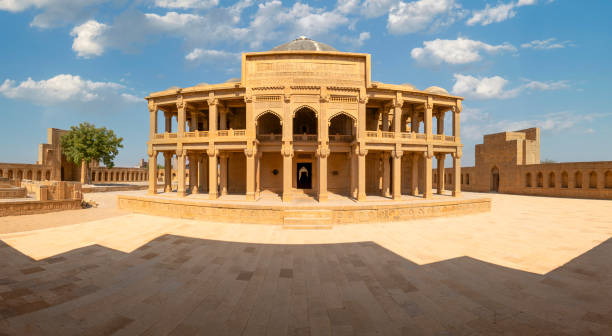
The Origins of Makli Necropolis
The Makli Necropolis dates back to the 14th century, during the rule of the Samma dynasty (1351–1524). The Samma rulers made Thatta their capital and supported art, culture, and architecture. They turned the city into a center for trade, learning, and spirituality. As a result, they chose Makli as their burial site.
Many believe that the Sufi saint Sheikh Hamad Jamali blessed this land and predicted its future as a sacred necropolis. What started as a small burial ground grew into a massive cemetery, showcasing the grandeur and cultural diversity of Sindh’s ruling dynasties.
The Samma Dynasty: Founders of Makli
The Samma dynasty was the first to shape Makli Necropolis. These rulers followed Sindhi traditions and Islamic beliefs, blending both in their architecture. Their tombs at Makli stand out for their:
- Stone Carvings – Intricate floral and geometric patterns inspired by nature.
- Islamic Elements – Domes, minarets, and Arabic calligraphy.
- Local Craftsmanship – Use of locally sourced stone and traditional techniques.
The Tomb of Jam Nizamuddin II is one of the most remarkable from this period. As the most famous Samma ruler, his tomb showcases Sindhi-Islamic architecture with a massive dome, intricate carvings, and inscriptions honoring his reign.
The Samma dynasty’s legacy at Makli laid the foundation for its growth. They helped establish it as a cultural and spiritual landmark for future generations.
The Arghun and Tarkhan Dynasties: Persian Influences
After the Samma dynasty declined, Sindh came under the rule of the Arghun dynasty (1520–1554) and later the Tarkhan dynasty (1554–1592). Both dynasties had Turkic-Mongol roots and introduced Persian influences to the region.
Arghun Contributions
The Arghuns were skilled in military strategy and administration. Their tombs at Makli showcase a blend of Persian and Central Asian architecture, featuring:
- Pointed Arches – A signature element of Persian architecture.
- Glazed Tiles – Used for decoration, adding color and elegance.
- Symmetrical Designs – Reflecting the Persian love for balance and harmony.
Tarkhan Contributions
The Tarkhans continued and expanded the Arghun architectural legacy. Their tombs stand out for:
- Ornate Facades – Featuring detailed carvings and inscriptions.
- Octagonal and Square Structures – A shift from the circular domes of the Samma period.
- Persian Calligraphy – Beautiful Quranic verses and poetic inscriptions.
The Tomb of Isa Khan Tarkhan II is one of the most famous from this era. It remains a stunning example of Persian-influenced architecture at Makli Necropolis.
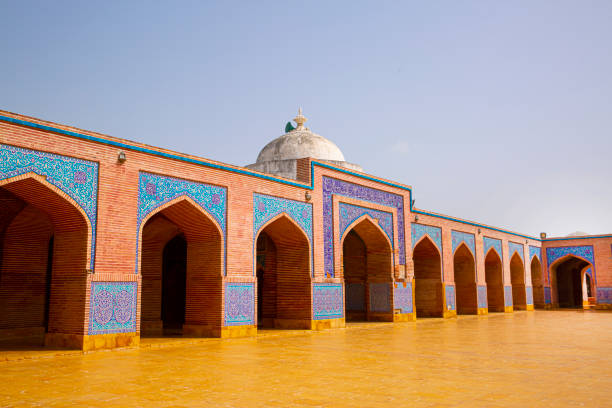
The Mughal Era: Grandeur and Sophistication
In the late 16th century, Sindh joined the Mughal Empire, which changed the history of Makli Necropolis. The Mughals were famous for their impressive buildings, and they brought a sense of grandeur to this site.
Mughal Contributions
During the Mughal era, the tombs at Makli stood out due to their size, elegance, and detailed craftsmanship. Here are some important features:
- Marble Inlays: Craftsmen used these to create beautiful floral and geometric designs.
- Double Domes: This design innovation added height and sophistication to the structures.
- Charbagh Layout: Some tombs included gardens, showcasing the Mughal appreciation for nature.
One notable tomb from this period is the Tomb of Mirza Jani Baig, who served as a governor of Thatta under Emperor Akbar. This tomb exemplifies Mughal architectural brilliance with its towering dome, elaborate carvings, and spacious courtyard.The architectural style at Makli reflects a blend of influences from various cultures, including Muslim, Hindu, Persian, and Gujarati designs. Each era contributed unique elements that enhanced the beauty of this site, making it a significant cultural landmark.
A Chronicle of Sindh’s History
The Samma dynasty was the first to shape Makli Necropolis. These rulers followed Sindhi traditions and Islamic beliefs, blending both in their architecture. Their tombs at Makli stand out for their:
- Stone Carvings – Intricate floral and geometric patterns inspired by nature.
- Islamic Elements – Domes, minarets, and Arabic calligraphy.
- Local Craftsmanship – Use of locally sourced stone and traditional techniques.
The Tomb of Jam Nizamuddin II is one of the most remarkable from this period. As the most famous Samma ruler, his tomb showcases Sindhi-Islamic architecture with a massive dome, intricate carvings, and inscriptions honoring his reign.
The Samma dynasty’s legacy at Makli laid the foundation for its growth. They helped establish it as a cultural and spiritual landmark for future generations.
The Samma dynasty was the first to shape Makli Necropolis. These rulers followed Sindhi traditions and Islamic beliefs, blending both in their architecture. Their tombs at Makli stand out for their:
- Stone Carvings – Intricate floral and geometric patterns inspired by nature.
- Islamic Elements – Domes, minarets, and Arabic calligraphy.
- Local Craftsmanship – Use of locally sourced stone and traditional techniques.
The Tomb of Jam Nizamuddin II is one of the most remarkable from this period. As the most famous Samma ruler, his tomb showcases Sindhi-Islamic architecture with a massive dome, intricate carvings, and inscriptions honoring his reign.
The Samma dynasty’s legacy at Makli laid the foundation for its growth. They helped establish it as a cultural and spiritual landmark for future generations.
The People Behind the Tombs
The tombs at Makli Necropolis are not just architectural marvels; they are also a tribute to the people who shaped Sindh’s history. Some of the notable figures buried here include:
Jam Nizamuddin II: A Samma ruler known for his wisdom and patronage of the arts.
Isa Khan Tarkhan II: A Tarkhan governor who played a key role in the region’s administration.
Mirza Jani Baig: A Mughal governor who contributed to the development of Thatta.
Sufi Saints: Revered spiritual leaders whose tombs attract pilgrims from across the region.
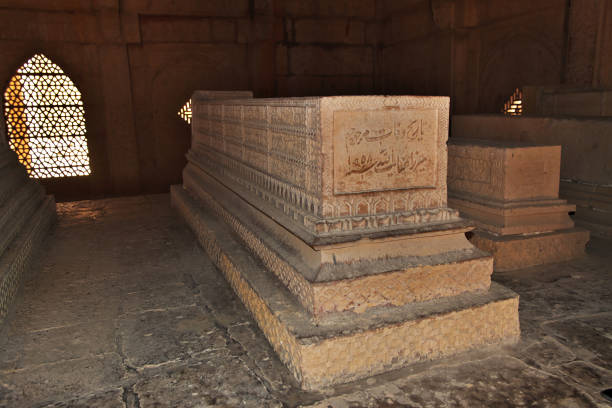
Cultural & Spiritual Importance
Makli Necropolis is more than a historical site; it is a spiritual hub that deeply matters to the local community. The tombs of Sufi saints make it a sacred place. Many pilgrims and spiritual seekers visit from across the region.
Sufi Influence
The necropolis has deep ties to Sufism, a mystical branch of Islam that focuses on spiritual growth and devotion. Many Sufi saints buried here helped spread Islam in the region. People honor them for their wisdom and piety. Their tombs serve as sacred places where visitors seek blessings and comfort.
Local Legends and Mysticism
Makli Necropolis is rich in local legends and folklore. One famous story says that a Sufi saint blessed the site and predicted it would be the final resting place for both kings and commoners. Another legend tells of a hidden treasure beneath the tombs, adding mystery to the site.
Annual Gatherings
Every year, thousands of pilgrims visit Makli Necropolis for religious gatherings and festivals. These events include prayers, music, and communal feasts, creating a lively and festive atmosphere.
The spiritual and cultural importance of Makli Necropolis keeps its heritage alive. History and tradition continue to flourish at this sacred site.
Tourist Experience
Visiting Makli Necropolis is a special experience that combines history, architecture, and spirituality. Here’s what you need to know to plan your trip:
Best Time to Visit
he best time to visit Makli Necropolis is from October to March, when the weather is pleasant for exploration. Summers in Sindh are extremely hot, making outdoor visits challenging.
Tips for Visitors
Wear Comfortable Shoes: The site is large, and you’ll walk a lot to explore the tombs.
Carry Water and Sunscreen: The weather is dry, so stay hydrated and protect yourself from the sun.
Hire a Local Guide: A knowledgeable guide will share valuable insights about the site’s history and significance.
Respect Local Customs: Since this is a sacred site, dress modestly and behave respectfully.
Entry Fees and Timings
ntry Fee: A small fee is required, which helps maintain and preserve the site.
Timings: The necropolis is open from sunrise to sunset for visitors.
Nearby Attractions
Thatta City: Explore the historic city of Thatta, known for its Shah Jahan Mosque and bustling bazaars.
Keenjhar Lake: A scenic lake located about 25 km from Thatta, perfect for a relaxing day trip.
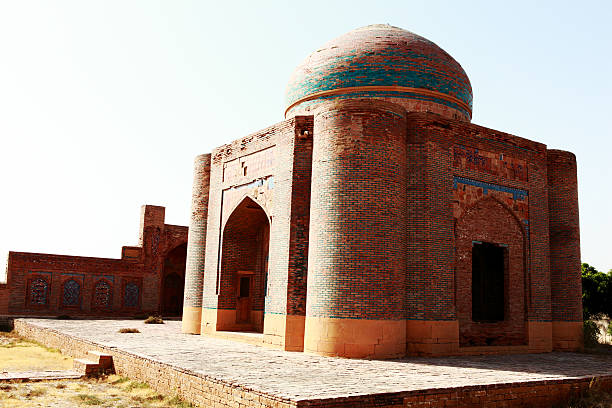
Preservation & Challenges
Despite its historical and cultural significance, Makli Necropolis faces several preservation challenges.
Threats to the Site
Erosion: Wind and rain gradually wear down the stone structures.
Vandalism: Some tombs have suffered damage from graffiti and neglect.
Climate Change: Rising temperatures and shifting weather patterns threaten the site’s long-term survival.
Preservation Efforts
Preservation Efforts: UNESCO and local authorities are working to protect Makli Necropolis through restoration projects, awareness campaigns, and sustainable tourism practices.
Importance of Responsible Tourism
Visitors must help preserve the site by avoiding littering, respecting the tombs, and supporting local conservation efforts.
Entry Fees and Timings
How to Get There
Makli Necropolis is located about 6 km from Thatta and 100 km from Karachi, making it easily accessible for travelers.
Transport Options
From Karachi: You can hire a private car, take a bus, or join a guided tour. The journey takes approximately 2-3 hours.
From Thatta: Local taxis and rickshaws are available to take you to the necropolis.
Accommodation
While there are no hotels at Makli itself, Thatta and Karachi offer a range of accommodation options to suit all budgets.



